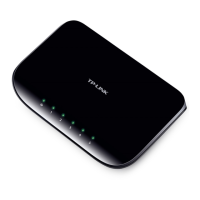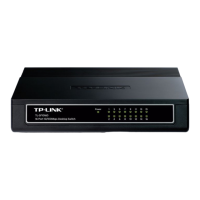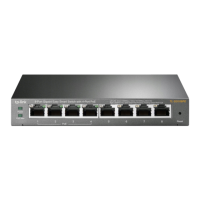Switching Configuring Ports
User Guide 25
2
Configuring Ports
Choose the menu Switching > Port Setting to load the following page.
Figure 2-1 Configuring Ports
Follow these steps to configure the port parameters.
1) Select the desired ports and set basic parameters for the ports.
Status Enable or disable the port. With this option enabled, the port forwards packets
normally. Otherwise, the port cannot work. By default, it is enabled.
Speed/Duplex Select the appropriate speed and duplex mode for the port. When Auto is
selected, the port automatically negotiates speed mode with the connected
device. It is recommended to select Auto if both ends of the link support auto-
negotiation.

